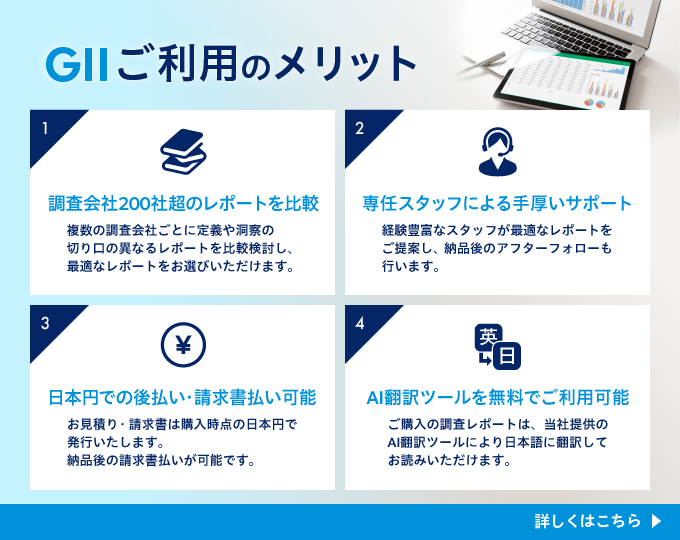
|
市場調査レポート
商品コード
1835592
マルチモーダルイメージング市場:コンポーネント、モダリティ、用途、エンドユーザー別-2025~2032年の世界予測Multimodal Imaging Market by Component, Modality, Application, End User - Global Forecast 2025-2032 |
||||||
カスタマイズ可能
適宜更新あり
|
|||||||
| マルチモーダルイメージング市場:コンポーネント、モダリティ、用途、エンドユーザー別-2025~2032年の世界予測 |
|
出版日: 2025年09月30日
発行: 360iResearch
ページ情報: 英文 198 Pages
納期: 即日から翌営業日
|
概要
マルチモーダルイメージング市場は2032年までにCAGR 6.37%で49億2,000万米ドルの成長が予測されます。
| 主要市場の統計 | |
|---|---|
| 基準年 2024年 | 30億米ドル |
| 推定年 2025年 | 31億9,000万米ドル |
| 予測年 2032年 | 49億2,000万米ドル |
| CAGR(%) | 6.37% |
マルチモーダルイメージングの開発と臨床上の優先事項に関する権威あるフレームワークにより、利害関係者の投資と運用の意思決定ポイントを明確化
マルチモーダルイメージングは技術革新と臨床ニーズの交差点に位置し、医療全体の診断チャネルと調査手法を再構築しています。近年、分子と解剖学的画像モダリティ、高度ソフトウェア分析、インテグレーションサービスモデルの融合により、診断の信頼性を高め、治療法の選択を個別化し、臨床ワークフローを合理化する機会が創出されています。この採用では、本レポートを貫く本質的なテーマ、すなわち技術的融合、臨床的有用性、規制の進化、導入に影響を与える商業的力学をフレームワーク化しています。
このセグメントが発展するにつれ、機器メーカーからヘルスケアプロバイダ、研究機関までの利害関係者は、性能、コスト、相互運用性の間の複雑なトレードオフを乗り越えなければなりません。本レポートでは、マルチモーダルイメージングが差別化された臨床的価値をもたらすセグメント、効果的な導入に必要な運用上の考慮事項、最も生産性の高いパートナーシップに重点を置いています。イントロダクションでは、技術的進歩が臨床的利益にどのように反映されるのか、また投資や提携を評価する際にリーダーは何を評価すべきなのかを強調し、以降のセクションに期待を持たせています。
マルチモーダルイメージングの導入と臨床ワークフローを形成する技術的、規制的、商業的変曲点の定義
マルチモーダルイメージングの状況は、技術革新、精密診断に対する需要の増加、データ主導の解釈の役割の拡大により、大きく変化しています。より高解像度の検出器、コンパクトなマルチモダリティスキャナー、ハイブリッドシステムなどのハードウェアの改良により、臨床医は1回の撮影でより豊富なデータセットを取得できるようになっています。同時に、AIを活用した画像再構成、定量的バイオマーカー、統合PACSワークフローなど、ソフトウェアの進歩が新たな診断洞察を引き出し、解釈のばらつきを減らしています。
規制チャネルや償還の枠組みも適応しつつあり、ベンダーや医療システムは臨床的有用性と費用対効果を実証することが求められています。このようなシフトは、サービスやソフトウェアのサブスクリプションが資本購入を補完する新たな商業モデルを促し、機器メーカー、学術センター、画像ネットワーク間のコラボレーションがエビデンス生成を加速させる中心となっています。その結果、ハードウェアとソフトウェアの迅速な反復が、検証された臨床結果の必要性とのバランスを保ち、相互運用可能でユーザー中心のソリューションと、患者管理の改善に関する明確なエビデンスを提供できる企業にビジネス機会がもたらされています。
最近の米国の関税動向が、医療用画像処理セグメントにおけるサプライチェーンの再編成、調達の適応、戦略的ソーシングをどのように迫ったかを検証します
関税施策の変更は、グローバルな医療機器サプライチェーンに重大な摩擦をもたらし、調達コストを引き上げ、調達戦略を再構築する可能性があります。米国では、最近の関税調整が画像処理ハードウェア、コンポーネント、アクセサリの輸入決定に影響を及ぼし、メーカーに生産拠点、サプライヤーとの契約、在庫管理の見直しを促しています。このような施策転換は、貿易関連のコスト変動にさらされるリスクを軽減するために考案されたニアショアリング、地域製造ハブ、デュアルソーシング戦略をめぐる議論を加速させることが多いです。
現実的な観点からは、ヘルスケアプロバイダと流通パートナーは、調達スケジュールの見直し、注文の一本化、サービスと消耗品を包括するTCOの取り決め交渉などで対応しています。ベンダーにとっては、関税に起因するコスト圧力により、市場アクセスを維持するためのバリューベース価格設定、バンドルサービスの提供、ローカルパートナーシップの強化の重要性が高まっています。今後、サプライチェーンを積極的に再設計し、関税の変動に備えたシナリオ・プランニングに取り組み、柔軟な製造・流通体制を追求する組織は、市場でのプレゼンスを維持し、利幅を守るために有利な立場になると考えられます。
コンポーネント、モダリティ、用途、エンドユーザープロファイルを関連付ける統合セグメンテーションの視点により、差別化された採用チャネルと価値促進要因を明らかにします
きめ細かなセグメンテーション分析により、市場を複数の分析レンズで見た場合、需要促進要因と導入検討要因がどのように異なるかを明らかにします。この分類では、高度ハードウェア用資本支出と、サービスやソフトウェアライセンシングに結びついた経常収益モデルが共存しています。ハードウェアの決定はスループット、画質、統合互換性を優先し、サービスやソフトウェアへの投資はライフサイクルサポート、分析機能、臨床ITシステムとの相互運用性を重視します。
よくあるご質問
目次
第1章 序文
第2章 調査手法
第3章 エグゼクティブサマリー
第4章 市場概要
第5章 市場洞察
- AIを活用したPETとMRIデータの融合によりがん診断とモニタリングを強化
- ポイントオブケア診断用ハンドヘルド超音波と光音響画像プラットフォームの出現
- 神経科学研究における高度脳機能マッピング用リアルタイムMRIとEEGモダリティの統合
- 術中腫瘍マージン検出用蛍光と組み合わせたマルチモーダル光干渉断層撮影法の開発
- 腫瘍学ワークフローにおけるディープラーニング強化機能を備えたデュアルモダリティPET/CTスキャナーの商用化
- 前臨床研究における組織分類の改善用MRIと融合したハイパースペクトルイメージングの採用
第6章 米国の関税の累積的な影響、2025年
第7章 AIの累積的影響、2025年
第8章 マルチモーダルイメージング市場:コンポーネント別
- ハードウェア
- サービス
- ソフトウェア
第9章 マルチモーダルイメージング市場:モダリティ別
- PET-CT検査
- PET MR
- SPECT CT
第10章 マルチモーダルイメージング市場:用途別
- 心血管系
- 神経学
- 腫瘍学
第11章 マルチモーダルイメージング市場:エンドユーザー別
- 学術機関
- 診断画像センター
- 病院
- 研究機関
第12章 マルチモーダルイメージング市場:地域別
- 南北アメリカ
- 北米
- ラテンアメリカ
- 欧州・中東・アフリカ
- 欧州
- 中東
- アフリカ
- アジア太平洋
第13章 マルチモーダルイメージング市場:グループ別
- ASEAN
- GCC
- EU
- BRICS
- G7
- NATO
第14章 マルチモーダルイメージング市場:国別
- 米国
- カナダ
- メキシコ
- ブラジル
- 英国
- ドイツ
- フランス
- ロシア
- イタリア
- スペイン
- 中国
- インド
- 日本
- オーストラリア
- 韓国
第15章 競合情勢
- 市場シェア分析、2024年
- FPNVポジショニングマトリックス、2024年
- 競合分析
- General Electric Company
- Siemens Healthineers AG
- Koninklijke Philips N.V.
- Canon Medical Systems Corporation
- Fujifilm Holdings Corporation
- PerkinElmer, Inc.
- Bruker Corporation
- United Imaging Healthcare Co., Ltd.
- Mediso Medical Imaging Systems Ltd.
- MR Solutions Ltd.

